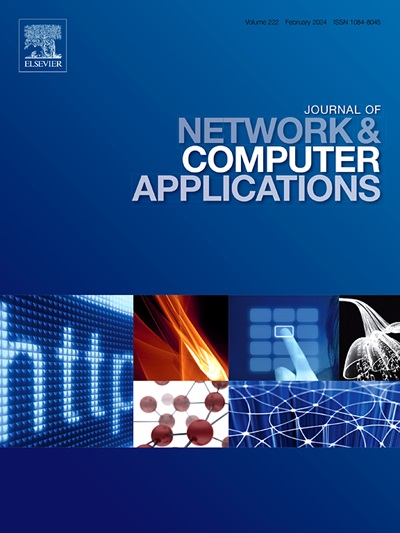A survey of secure semantic communications
IF 7.7
2区 计算机科学
Q1 COMPUTER SCIENCE, HARDWARE & ARCHITECTURE
引用次数: 0
Abstract
Semantic communication (SemCom) is regarded as a promising and revolutionary technology in 6G, aiming to transcend the constraints of “Shannon’s trap” by filtering out redundant information and extracting the core of effective data. Compared to traditional communication paradigms, SemCom offers several notable advantages, such as reducing the burden on data transmission, enhancing network management efficiency, and optimizing resource allocation. Numerous researchers have extensively explored SemCom from various perspectives, including network architecture, theoretical analysis, potential technologies, and future applications. However, as SemCom continues to evolve, a multitude of security and privacy concerns have arisen, posing threats to the confidentiality, integrity, and availability of SemCom systems. This paper presents a comprehensive survey of the technologies that can be utilized to secure SemCom. Firstly, we elaborate on the entire life cycle of SemCom, which includes the model training, model transfer, and semantic information transmission phases. Then, we identify the security and privacy issues that emerge during these three stages. Furthermore, we summarize the techniques available to mitigate these security and privacy threats, including data cleaning, robust learning, defensive strategies against backdoor attacks, adversarial training, differential privacy, cryptography, blockchain technology, model compression, and physical-layer security. Lastly, this paper outlines future research directions to guide researchers in related fields.
安全语义通信综述
语义通信(SemCom)被认为是6G时代一项很有前途的革命性技术,旨在通过过滤冗余信息和提取核心有效数据来超越“香农陷阱”的限制。与传统通信模式相比,SemCom具有减轻数据传输负担、提高网络管理效率和优化资源分配等显著优势。许多研究者从不同的角度对SemCom进行了广泛的探索,包括网络架构、理论分析、潜在技术和未来应用。然而,随着SemCom的不断发展,出现了大量的安全和隐私问题,对SemCom系统的保密性、完整性和可用性构成了威胁。本文全面介绍了可用于保护SemCom的技术。首先,我们详细阐述了SemCom的整个生命周期,包括模型训练、模型迁移和语义信息传递阶段。然后,我们确定在这三个阶段中出现的安全和隐私问题。此外,我们总结了可用于减轻这些安全和隐私威胁的技术,包括数据清洗、鲁棒学习、针对后门攻击的防御策略、对抗性训练、差分隐私、密码学、区块链技术、模型压缩和物理层安全。最后,概述了未来的研究方向,以指导相关领域的研究人员。
本文章由计算机程序翻译,如有差异,请以英文原文为准。
求助全文
约1分钟内获得全文
求助全文
来源期刊

Journal of Network and Computer Applications
工程技术-计算机:跨学科应用
CiteScore
21.50
自引率
3.40%
发文量
142
审稿时长
37 days
期刊介绍:
The Journal of Network and Computer Applications welcomes research contributions, surveys, and notes in all areas relating to computer networks and applications thereof. Sample topics include new design techniques, interesting or novel applications, components or standards; computer networks with tools such as WWW; emerging standards for internet protocols; Wireless networks; Mobile Computing; emerging computing models such as cloud computing, grid computing; applications of networked systems for remote collaboration and telemedicine, etc. The journal is abstracted and indexed in Scopus, Engineering Index, Web of Science, Science Citation Index Expanded and INSPEC.
 求助内容:
求助内容: 应助结果提醒方式:
应助结果提醒方式:


